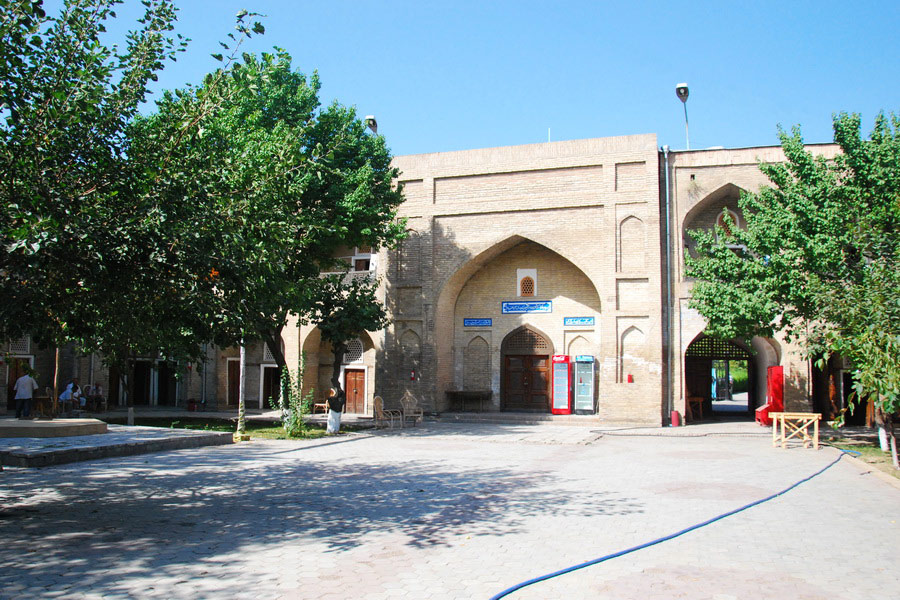Abdulkasym Madrassah, Tashkent

The Abdulkasym Madrassah, located near the Istiqlol Palace next to the monument to the poet Alisher Navoi, can satisfy your need to explore - with a little bit of shopping thrown in. Abdulkasym Madrassah is one of the newer architectural treasures in comparison with the Barakhan and Kukeldash Madrassahs.
The architectural Monument of Madrassah Abdulkasym was built in 1850, with money donated by Tashkent noble man Abdulkasym, who lived during the 19th c. in Tashkent. This building was originally used as an Islamic college.
The yard of the Madrassah had an indoor water-pool with a cupola in the shape of a dome - or sardoba. When entering the Madrassah to the left there was a classroom, to the right - a mosque, and in the inner courtyard was located the Honakoyi Muyi Muborak.
The Library of Oriental Manuscripts of the Mufti (XVIII - XIX century) is here. Library building was built in a style quite typical for Tashkent. On the roof is a sort of "light" of wood with glazed top. This allows natural light the building, especially the reading room, which is located on the second floor gallery.
In the library building, in a special safe, where supported by a certain temperature and humidity, kept the famous Osman's Koran, dating from the 7th century.
On the 17th of June 1865, the famous Tashkent-Russian peace agreement (headed by Russian general Chernyaev) was signed here. Also the founder of the Uzbek novelist school, Abdulla Kodiri, studied here from l914-1917.
Despite its relative newness, the Abdulkasym Madrassah is one of the most imposing historical buildings in Tashkent. Situated in the southern part of "Old Tashkent" not far from the former Beshogoch Gates, today it is surrounded by modern architecture, including the Istiqlol Palace and many huge apartment buildings.
The Abdulkasym Madrassah is a monument to Abdulkasim khan, a great intellectual of his time. He was said to be able to recite the entire Koran by heart - a talent he reputedly passed on to all of his children. He paid about thirty thousand rubles for the construction of the Madrassah, or teaching mosque. Every year he paid for the education of 150 pupils. He died in 1892 during a cholera outbreak.

